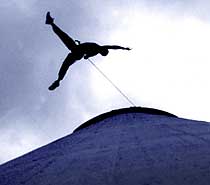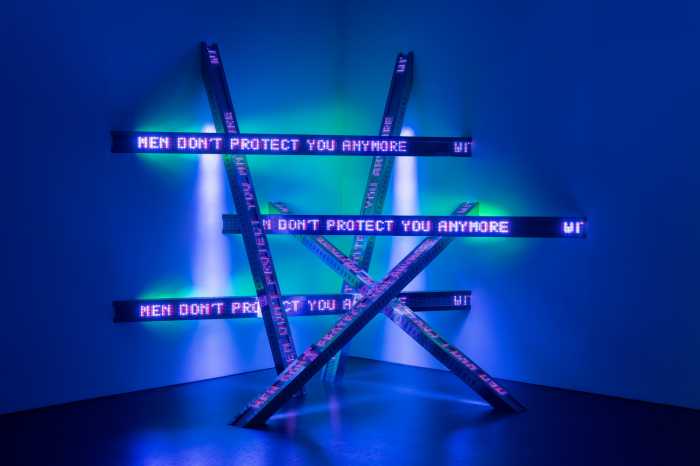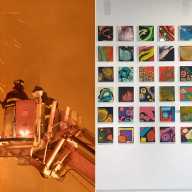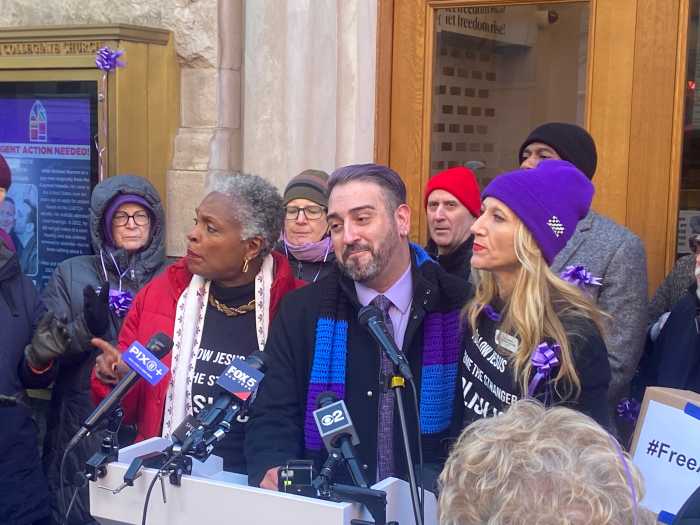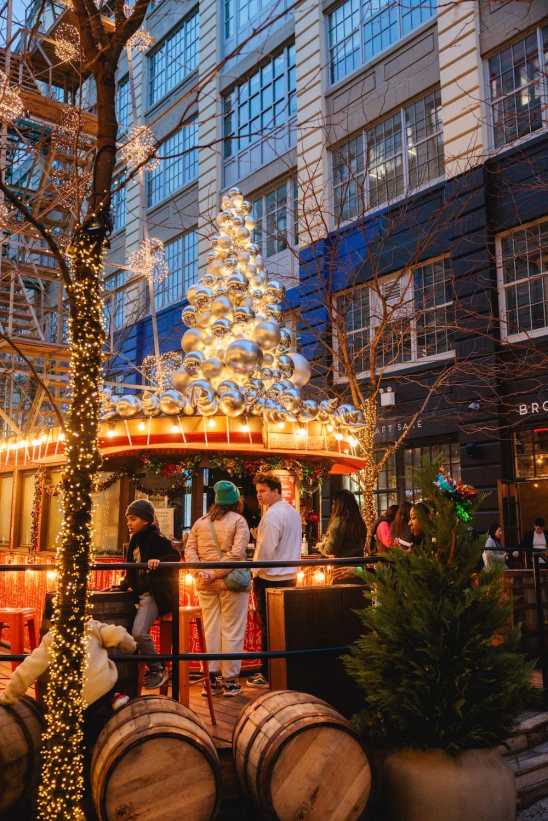When the Port of New York Grain Elevator
Terminal was built in Red Hook in 1922, it was a center for processing
the grains that had been shipped east via the Eerie Canal system.
As industry reached its nadir in Red Hook, the terminal closed
down.
That might have been the end of the story. But in 1997, John
Quadrozzi Jr.’s Gowanus Industrial Park bought the building from
the Port Authority with the aim of restoring it to commercial
use. More recently, it has become the centerpiece of "Picture
Red Hook," a multimedia production created by Zaccho Dance
Theatre and presented by Dancing in the Streets from Aug. 22
through Aug. 24.
The interdisciplinary production features choreography by Zaccho’s
founder and artistic director Joanna Haigood, video by Mary Ellen
Strom and music by Lauren Weinger. Aerial dancers scale the 12-story
façade while 100-foot-high video images of Red Hook and
its residents are projected on the terminal walls. An electronic
score combines the sounds and music of the community.
Haigood spoke with GO Brooklyn from San Francisco, where the
dance company is based.
"I had done some work with Dancing in the Streets in 1993,"
said Haigood. "They co-commissioned [with Walker Arts Center
in Minneapolis, and Jacob’s Pillow Dance Festival in the Berkshires]
’Cho-Mu,’ which was performed on Roosevelt Island."
At that time, Elise Bernhardt was executive director of Dancing
in the Streets. She founded the company in 1984 with the goal
of commissioning, producing and presenting site-specific work.
"We stayed in touch after that production. [In 1992] they
had started The Red Hook Initiative, which works in the schools
and produces events. Five years ago, Elise called me and said,
’I’d really like to commission a work from you on Red Hook.’
One thing led to another, and I developed the project."
As a first step in creating "Picture Red Hook," Bernhardt
took Haigood on a tour of the neighborhood.
"Elise showed me around several places. I wanted to focus
on the things people were aspiring to and what they were hoping
for their community," Haigood recalled. "She took me
to the grain elevator. I try to work with large-scale constructions
and work inside them. The grain elevator was perfect because
it could accommodate larger-scale images, and it was a metaphor
for what had happened to the community. It represents the strength,
the industry that had been there until the ’60s when it closed."
In the last few years, people like Quadrozzi have been working
industriously to promote the cultural and commercial renaissance
that has begun to transform this largely working-class neighborhood.
Quadrozzi is currently renovating the grain terminal for maritime
use – shipping and importing. He is also chairman of the Red
Hook-Gowanus Chamber of Commerce’s planning committee, which
oversaw the development of a position paper, "Red Hook/Gowanus
Reborn," released several weeks ago.
For Haigood, this renaissance only strengthens the symbolism
of the grain terminal.
"The whole idea of a grain terminal is hopeful," she
said. "It stores food. It represents the future. If speaks
to sustainability and nurturing."
Aviva Davidson, who succeeded Bernhardt three years ago, stresses
the role played by the community in site-specific work, which
she defines as "work created for non-theatrical spaces,
either indoors or outdoors – warehouses, beaches or grain terminals.
"Usually the work has some relationship to the site and
its people – physically, visually or context-wise," she
said. "This work is at the grain terminal and about the
grain terminal. It’s not just artists thinking about a community.
The community has a say in it."
Dancing in the Streets’ Sarah Johnson worked with more than 50
organizations to collect the "interview suites" in
which people related their hopes for the future and the names
of people close to them. She also gathered the people for the
final community photo, which Davidson said would eventually be
installed in a public place in Red Hook.
The result is an innovative mix of art, industry, agriculture
and humanity.
While the harnessed performers execute their aerial feats, the
video scenes alternate tableaux of the neighborhood and the grain
terminal. The penultimate scene of a huge wheat field is accompanied
by the dancers making gestures of harvesting. The soundtrack
mixes original Cuban and Italian music with sounds inherent to
a grain terminal like grain pouring.
"[Picture Red Hook] has a larger connection to the community
than we’ve ever had," said Davidson.
But for Haigood, it’s only a small step from this community of
10,000 to the universality of art.
"The strength of a community is both in its diversity and
its ability to unify," she said. "That’s what is evident
in the renaissance of this community. It speaks not only to Red
Hook, but the potential of mankind."
Dancing in the Street’s production of "Picture Red Hook,"
created by Zaccho Dance Theatre, will be performed Aug. 22 through
Aug. 24, from 9 pm to 10 pm at the Gowanus Industrial Park (former
Port of New York Grain Elevator Terminal), 699 Columbia Street
Marine Terminal in Red Hook. Admission is free. For more information,
including details about free shuttle buses from the F train,
call (212) 625-3505 or visit www.dancinginthestreets.org.
Bring lawn chairs and blankets.


